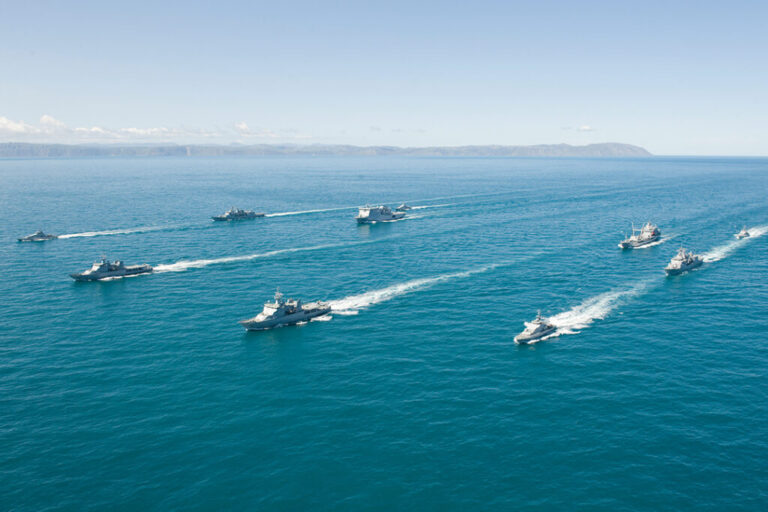US, Allies Conduct Drills Amidst Chinese Military Activity
The South China Sea, a vital waterway rich in resources, has become a growing flashpoint for international tensions. This weekend, the Philippines, the United States, Japan, and Australia flexed their military muscle with joint naval drills, which countered China’s assertive claims.
The drills codenamed “Maritime Cooperative Activity” (MCA), involved warships from each nation and aimed to showcase their commitment to a “free and open Indo-Pacific.” This aligns with the vision of a rules-based international order championed by the participating countries. Notably, the drills come just days before a trilateral summit between the US, Philippines, and Japan, highlighting the growing regional cooperation.
The participating nations emphasized the MCA’s focus on fostering interoperability and upholding international law. The drills encompassed anti-submarine warfare training, underscoring their commitment to regional security.
China, which claims sovereignty over most of the South China Sea, responded by announcing “combat patrols” in the contested waters on the same day as the MCA. This move is widely seen as a challenge to the joint drills and a demonstration of China’s military might.
The recent activities reflect the simmering tensions in the South China Sea. The Philippines, Vietnam, and other Southeast Asian nations have long disputed China’s expansive territorial claims. Beijing’s increasingly assertive actions, including deploying military outposts on disputed islands, have raised concerns about freedom of navigation and regional security.
The US has repeatedly assured the Philippines of its commitment to defending them in case of an armed attack in the South China Sea. Meanwhile, the Philippines and Japan are in talks for a defense pact allowing troop deployments on each other’s territory. These developments highlight the evolving security landscape in the region, where diplomacy and military preparedness are intertwined.
Looking Ahead
The recent drills and China’s response underscore the complex geopolitical dynamics in the South China Sea. While the US and its allies seek to maintain a balance of power and uphold international law, China remains steadfast in its territorial claims. Whether increased dialogue and cooperation can prevent escalation in this strategically significant region remains to be seen.






